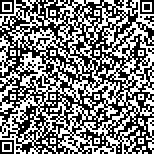吴霜,刘春风,楚兰,王志涛,石阳梅.肌电生物反馈联合低频电刺激和康复训练对脑卒中后吞咽功能障碍的影响[J].中华物理医学与康复杂志,2017,39(5):332-335
扫码阅读全文

|
| 肌电生物反馈联合低频电刺激和康复训练对脑卒中后吞咽功能障碍的影响 |
|
| |
| DOI: |
| 中文关键词: 吞咽障碍 表面肌电生物反馈 脑卒中 食物性状 |
| 英文关键词: Dysphagia Surface electromyography Biofeedback Stroke |
| 基金项目:贵阳市科技局筑科合同[2012103]42号 |
|
| 摘要点击次数: 2454 |
| 全文下载次数: 3802 |
| 中文摘要: |
| 目的探讨肌电生物反馈(SEMG-BFT)联合低频电刺激和康复训练对脑卒中后吞咽功能障碍患者吞咽功能的影响,并对比不同性状食物在吞咽中的差异,以期为脑卒中后吞咽功能障碍患者选择全面的康复治疗方案提供依据。 方法选取脑卒中后吞咽功能障碍患者56例,随机分为治疗组和对照组,每组28例。对照组采用低频电刺激和康复训练治疗,治疗组患者对照组治疗方案的基础上加以SEMG-BFT治疗。于治疗前、治疗2周和治疗4周后分别采用洼田饮水试验、中文版吞咽功能评估量表(GUSS)评估患者吞咽功能,同时采用颏下肌群表面肌电(SEMG)信号检测2组患者吞咽不同性状食物时的吞咽时程和平均波幅值,并进行比较和分析。 结果治疗2周和4周后,2组患者洼田饮水实验评分、GUSS评分较组内治疗前均有明显改善,差异均有统计学意义(P<0.05),且治疗组治疗2周和4周后的洼田饮水实验评分、GUSS评分均优于对照组同时间点,差异均有统计学意义(P<0.05)。治疗2周和4周后,2组患者吞咽不同性状食物时的sEMG吞咽时程、平均波幅与组内治疗前比较,差异均有统计学意义(P<0.05);且治疗组治疗2周和4周后的sEMG吞咽时程、平均波幅与对照组同时间点比较,差异均有统计学意义(P<0.05)。经SNK-q检验显示,脑卒中后吞咽功能障碍患者吞咽糊状食物的吞咽时程、平均波幅分别为(1.43±0.12)s和(23.07±7.42)μV与空吞唾液和吞咽流质食物比较,差异均有统计学意义(P<0.05)。 结论SEMG-BFT联合电刺激电刺激和康复训练显著改善脑卒中后吞咽功能障碍患者的吞咽功能,而糊状食物是一种相对安全的训练工具,可用于早期吞咽功能的评定和治疗。 |
| 英文摘要: |
| Objective To explore the effect of surface electromyographic biofeedback (SEMG-BFT) combined with electrical stimulation on the swallowing function of stroke survivors with dysphagia, and to evaluate the electromyographic activity of the submental muscles in swallowing various foods so as to provide a basis for future rehabilitation of such patients. MethodsSixty patients were randomly divided into a treatment group and a control group, each of 28. Both groups were given low-frequency electrical stimulation and conventional swallowing training. The treatment group was additionally provided with SEMG-BFT. Before the treatment as well as after 2 and 4 weeks of treatment, the swallowing function of both groups was evaluated using the Kubota drinking water test (KDWT) and a Gugging swallowing screen (GUSS). Surface electromyographs of the submental muscles were recorded during empty swallowing, swallowing 10 ml of dilute liquid and swallowing 10 ml of paste. ResultsAfter two and four weeks of treatment, the average KDWT and GUSS scores of both groups had improved significantly, but that of the treatment group was significantly higher than that of the control group at each time point. After 2 and 4 weeks of treatment, significant differences were found in swallowing duration and the average amplitude of the sEMGs compared with before the treatment in both groups. The difference between the groups was significant at each time point. ConclusionsSEMG-BFT combined with electrical stimulation can significantly improve swallowing function. Paste food can be used safely in the early evaluation and treatment of swallowing dysfunction. |
|
查看全文
查看/发表评论 下载PDF阅读器 |
| 关闭 |